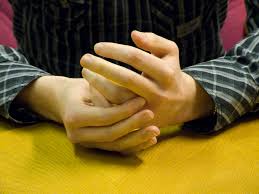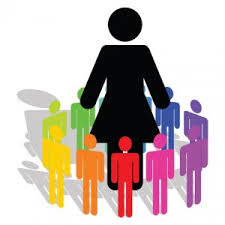Mostly in personal interview all the things are noted especially gestures and postures. Thus in this article I explained some hidden meaning that hand gestures denote.
Gestures are voluntary and involuntary, as well. They are movements we make with the fingers, hands, arms legs, head, and indeed every part of the body –with the intention to communicate. They can be used to emphasize, clarify or amplify a verbal message. For example, we point to a chair while offering someone a seat.
All hand movements have hidden meanings. What a person does with his hands, fingers, and arms is directly related to what is going in his mind –only from time to time it is preceded or interrupted by a consciously articulated plan. Each of the Gestures given below will be demonstrated to you in the class.
- Relaxed Hands:
It sends non-verbal messages of a person’s confidence, acceptance, and well being.
- Open Hands:
It is a sign of trust, and a show of interest in the opinion of the other person. It can also mean an invitation to the other to share his or her point of view.
- Clenched Hands:
It sends a number of signals depending on the context and the mood. It might also signify extreme emphasis, vehement declaration and desperate resolve. It also indicates tension and frustration and even anger. People often try to cover up their feelings by displaying a happy, smiling face but are betrayed by their clenched fists.
- Wringing Hands:
It denotes discomfort and tension.
- Pointing Index Finger:
It accompanies a word of threatening or warning, when one tries to drive a point home. People often take offence.
- Thumb Gestures:
Slipping hands into the pockets –the front or the back ones—and letting the thumbs stick out betrays a very dominant and aggressive attitude.
- Thumbs Up:
It is a gesture of exuding power and superiority.
- Cracking of Knuckles:
It is a signal of anxiety, nervousness, boredom, restlessness and an unresolved state of mind.
- Crossed or Folded Arms:
It indicates a protective guard against anticipated attack. It is also a comfortable position and the gesture that stands for relaxation. It reflects a closed mind as well. It signifies defensiveness or negativity. It is observed that people use this gesture when they feel insecure or when they disagree with the speaker.
- Partial Arm Cross:
To avoid the full crossed arm-gesture, people often end up using this gesture instead. It reflects lack of self-confidence.
- Arms behind the Back:
This gesture is restored to by a person who is experiencing inner conflict. He must be trying to hold himself back from taking aggressive action. It is also a gesture of self-control.
- Mouth Covering:
The person doing this might be
- Lying
- Unsure of what he is saying
- Trying to prevent himself from expressing his views which may be opposed to the speaker’s
- Whispering to keep something secret
- Trying to suppress a feeling
- Suffering from bad breath.
- Putting Objects in Mouth:
It shows that the person is under great pressure. If one uses this while speaking it suggests that he is procrastinating. It indicates that he is not sure or delaying a decision.
- Neck Scratching:
It shows that the person is suffering from some psychological discomfort at the given moment.
- Rubbing Eyes:
This shows that a person is in doubt or trying to deceive. It is also used while lying.
- Nose Rubbing:
It can be a sign of rejection, a gesture of doubt, when one is not sure about how to approach a subject or what the reaction of the audience might be.
- Hand on Check:
It signifies that he is in the process of evaluation, or in deep reflection, attention and interest.
- Chin Stroking:
This suggests a person is in deep reflection. It follows the flow of choices a person is deliberating upon regarding the proposition under consideration.
- Hand on the Head:
It indicates despair, bereavement, prolonged thinking, and boredom. It can also indicate extreme interest when accompanied by proper eye gestures.
- Slapping the Head:
It signifies forgetfulness, he is not intimidated by the other person having mentioned his forgetfulness. However, scratching the head with the hand is a gesture that expresses frustration or indicates that one is feeling flustered.





31 Comments. Leave new
This may be helpful to a number of students. Even I’m looking forward to apply the above points in the future.
Well written and informative
Nice article Padmaa. Didn’t know the reason behind many gestures! 🙂
Nice article
Nice articles. Would also like to know further how to control our anxiety during personal interviews and also what should be one’s posture while addressing the audience at large during corporate meetings? Do they symbolise something as well?
Very elaborate! Good article.
This article is so good. Thanks for sharing. It is very helpful for me.
This is vry informative as well as helpful as a lot of people face all this during interviews or any situation of pressure. Even i hav also gone through this! Nice article.
Pretty helpful tips. Good job.
Wonderful post!
This was quite interesting!
Nice and well explained article
Nice and well written article! Helpful in interviews. Good job! Keep going!
So much helpful, interesting and informative .. Thanks for sharing …. 🙂
These tips can come in handy!
Meaningful points !
great work 🙂
Your actions speak more than words- has been proved true here. Informative and useful.
well written
Very inFormative Good Work 😀
Great description..!!
Next time I go in a meeting or presentation, I will try to correlate them….good information !!
Wow! Beautiful article!!
interesting!
Never realized the importance of hand gestures. Thankyou fo bringing them out!
interesting
good points
Nice and interesting to read 🙂
Amazing! This is something unique and impressive I have read today 🙂
It’s important to pay attention to your hand gestures while you are communicating or making a presentation.
Informative. Good work!
very impressive ideas ! thanks for sharing.